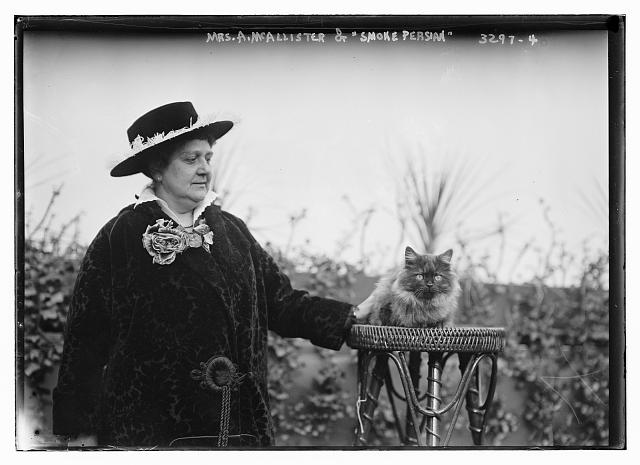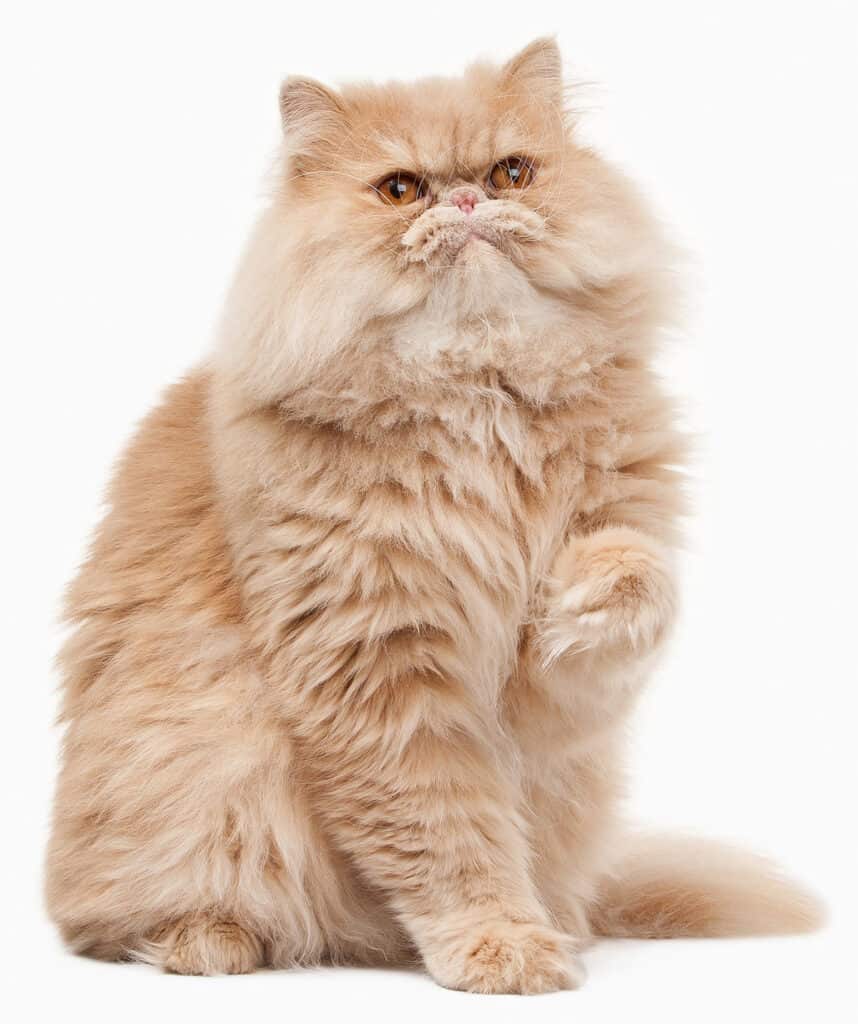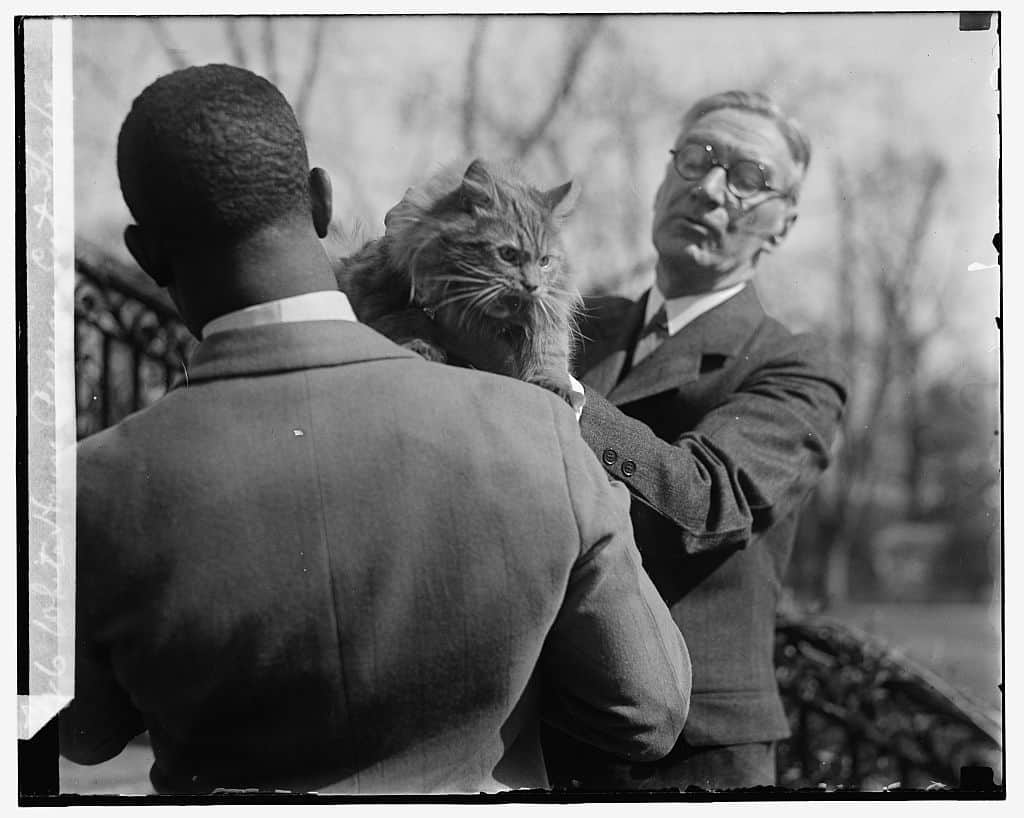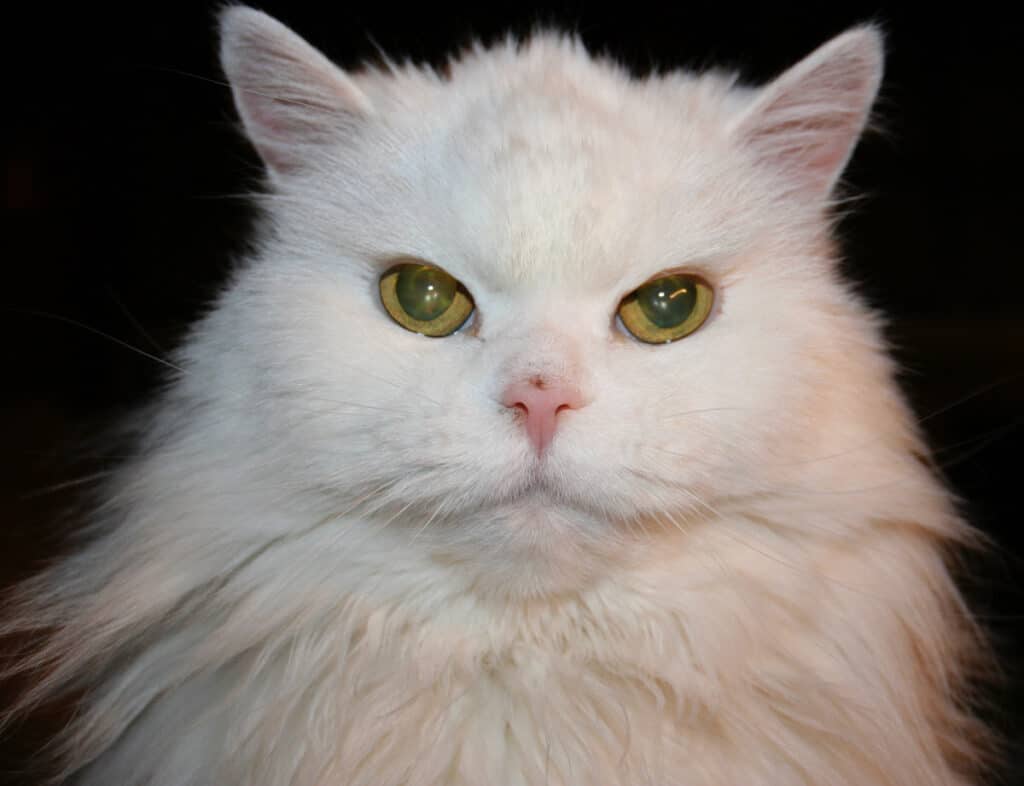Persian cats are one of the most popular cat breeds in the United States. These longhaired cats have a round face, stocky body, and short nose.
The breed gets its name after the region, Persia, from where the cat is believed to have originated. Persia covered parts of the Near East including modern day Iran and Turkey. Persian cats were brought to Italy in 1620 by Pietro della Valle, (1586 – 1652). From there, the Persian cat breed expanded into other European countries.
Persian cats were imported to the United States sometime in the late 19th century.

Peke-Face
Today’s Persian cats have a flatter face than Persians seen in older photos. The modern Persian is more genetically related to Persian cats breed from Western Europe than from the original Persian cats from the Near East.
A random mutation in the 1950s led to the rise in “peke-faced” Persian cats. Named after the Pekingese dog, this mutation resulted in European and American breeders selectively breeding Persian felines to produce a flat-faced or “snub-nosed” look in these cats. A flat face along with shorter, rounder ears is now the standard for Persian show cats.

Persian cats that look more like the original cat breed are known as traditional or doll-face Persian cats.
Video: Persian cats now and then
Some interesting trivia about Persian cats
President Herbert Hoover had a Persian cat named Kitty. Hoovers’s wife, Lou, was gifted the cat shortly after the president’s inauguration in 1929 and the cat was reported to have “the freedom of the corridors” in the White House. (Related: U.S. Presidents and Their Cats)

President Roosevelt also owned a Persian cat named Tabby in 1945.
References
History of the Persian cat ~ Pelaqita persians. (2018, November 12). Pelaqita Persians. https://pelaqitapersians.com/history-of-the-persian-cat/
Lipinski, M. J., Froenicke, L., Baysac, K. C., Billings, N. C., Leutenegger, C. M., Levy, A. M., … & Lyons, L. A. (2008). The ascent of cat breeds: genetic evaluations of breeds and worldwide random-bred populations. Genomics, 91(1), 12-21. https://doi.org/10.1016/j.ygeno.2007.10.009







